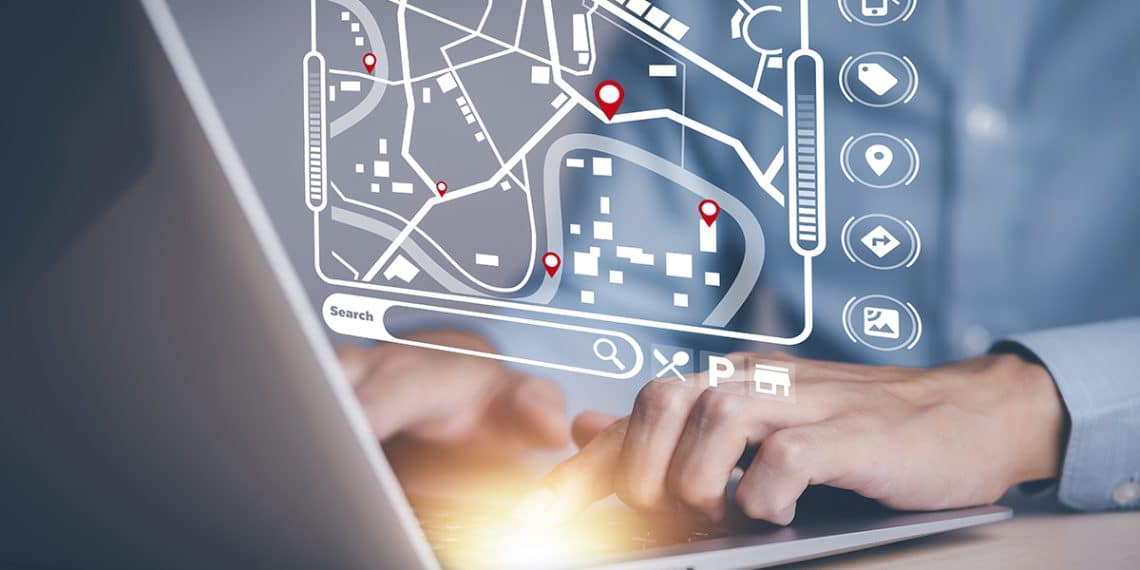Although businesses across the globe pledge improved customer experiences for their audiences, the gaps in their existing customer journey maps are quite concerning.
How can companies overcome the challenges of building an exceptional customer experience map?
The prerequisite to developing a solid customer journey map is the right mindset. As a service or product provider, you must have the capacity to understand and adapt to changing customer demands and act on the customers’ pain points.
Upon such a mindset shift, you will find it easier to use this customer experience mapping guide to your advantage. In this post, we will learn about customer journey mapping from inside and out.
Let’s get started.
Collect feedback with JustFeedback
JustFeedback helps your business increase profits and reduce risk by improving your customer experience
What is customer experience?
How can we define customer experiences or customer journeys?
Well, once distilled down, one can define customer journey as the overall impression customers have about your brand when they interact with your products, services, websites, and other touchpoints.
These touchpoints, if not optimized for a better experience, can be detrimental to a company’s bottom line.
The idea is to design an all-around vision and strategy for customer interactions that empowers customers to learn about their favorite products, services, and brands.
As a business owner, you should strive to optimize the journey customers embark on in their quest to know about what you have to offer.
What is a customer experience map?
As the name suggests, a customer experience map is essentially a visual representation of the complete journey a customer takes — moving through different phases like awareness, consideration, decision, retention, and loyalty.
The interactions and experiences customers go through can be mapped and designed for a better and more satisfying journey. The visual representation or story considers all the customer touchpoints, feelings, and events during the journey.
Right from the first time a customer visits your site to their first in-product experience, a customer experience map captures every set of data points that businesses can analyze and refine to significantly improve customer experience.

What are the benefits of customer journey mapping?
Now that we have understood the fundamentals of customer experience maps, let’s discuss the key benefits of customer journey mapping.
1. Helps understand customer emotions
Businesses can use customer journey maps to identify how easily customers are able to move through the customer journey.
This is an opportunity to jump into customer’s shoes. With a map, brands can figure out the efficiency of each and every step customers have to take along the journey.
The information can help them improve the steps and ensure customers feel less frustrated and confused.
2. Makes companies cost-efficient
When tracked to perfection, customer journey mapping can help companies reduce costs. Brands can set themselves up for success by mapping customer experience as it improves customer service by ten times.
Companies that deliberately manage customer journeys tend to increase their year-over-year growth, reduce customer churn, and even experience a decline in the cost of acquisition.
3. Improves customer and employee satisfaction
Satisfaction, as a metric, generally increases as brands provide customers with the experiences they demand.
With an effective customer journey mapping strategy, brands can successfully increase the number of positive social media comments, boost query resolution speed, and improve employee confidence.
Customer journey mapping is an opportunity for companies to fix their communications with customers.
4. Helps identify gaps in service
Companies can identify gaps in business-customer relationships through customer journey maps. Through mapping, you can track all marketing and sales channels and figure out if they are clogged or understaffed, leading to customer frustration.
Moreover, customer journey mapping helps optimize devices with which a customer interacts with brands.
5. Boost sales and revenue
As companies get closer to customers’ pain points and demands, they open themselves to opportunities for effective upselling and cross-selling.
This results in increased sales and improves marketing performance. Such improvements are a result of sales and marketing optimization that is possible only when companies track customer journey maps.
What are the common types of customer journey maps?
There are three common types of customer experience maps. Here we discuss them briefly.
1. Current state journey maps
These are customer journey maps that help track customer interactions in real time. Current state journey maps will monitor customers’ experiences across the journey and identify touchpoints that lead to dissatisfaction.
Since current state journey maps are preventative in nature, these will only help identify the gaps and design a better customer’s journey.
2. Future state journey maps
These are customer journey maps that cater to predictive customer experiences. In other words, future state journey maps are prepared to design an ideal process and are founded on customer journey predictions.
Although these are not commonly used, future state journey maps help move the customer experiences toward the ideal projection.
3. Day in the life journey maps
Day-in-the-life journey maps are quite useful in creating a clear picture of the customer’s relationship with a brand’s products and services.
These journey maps track customers’ day-to-day behavior and see how their pain points influence decision-making. With the information collected, companies can refine their products and services and integrate the journey with effective solutions.

How to create a customer experience map?
We have discussed the basics of customer journey maps and shared the benefits involved. It’s time we learn how to create a customer journey map. Here are the steps required —
1. Set goals
Customer journey mapping starts with proper goal setting. In this, you will have to figure out how the customer journey mapping will match your customer experience and business objectives.
When setting goals, businesses will have to consider the existing and prospective customers and shortlist goals that cater to these audiences.
Moreover, companies should include the customer experience of different stakeholders in their organizations to set the right goals.
The idea behind spending time setting goals for the process is to generate unique perspectives and insights related to the existing customer experiences.
If possible, couple this step with buyer persona development to ensure journey mapping is well-optimized.
2. Understand the customer’s journey
Once the prerequisites are completed, you can start paying attention to the existing customer journeys. You want to know what an average customer interaction or experience feels like at your company.
You can do this only when you try to understand the buyer’s journey.
Therefore, we suggest you track the actions taken by customers who are engaging with your services, products, and brand in general. Now the tasks and actions will differ for each company. So, we advise you to map the actions with relevant business operations.
Most importantly, you’d want to track the first interactions as these set the tone for the rest of the customer journey.
3. Figure out customers’ feelings and thought process
The third step in the process is all about mapping the feelings and emotions customers go through when interacting with your products and services.
Remember, the feelings the customer journey triggers in the target audience are going to impact your ability to market or sell your products.
Therefore, you want to track the emotions and thoughts, which can be done through surveys and interviews. Ask questions in the interviews that help surface these emotions and unravel the emotional aspect of customers’ decision-making.
The interviews may even help you discover easy and cost-effective solutions to match customers’ expectations.
4. Consider all customer touchpoints
Leave no touchpoints behind. Every time customers interact with your brand within the journey, it is an opportunity for you to learn more about them.
So, make sure you are on top of all interactions and communications happening between you and your existing or potential customers.
If boiled down to intent, each interaction or communication is a quest to find out more about your products and services, and slowly move along the conversion path.
Therefore, implementing an attribution model for tracking and analyzing the path toward sales and conversions is highly imperative.
This will also help you figure out if the journey is making customers interact too much before jumping to a conclusion.
5. Segment the journey into stages
While customer journey mapping considering the bigger scheme of things is important, the real work starts when you divide the journey process into manageable segments.
The best way to do this is by mentioning the most important parts of the customer journey and turning them into stages for better customer journey mapping.
When you track customer interactions and experiences within each stage, you will find it easier to figure out which part of the customer journey requires more attention and optimization.
6. Measure and improve
Customer journey mapping and optimization isn’t a one-time thing. To make the most of all this effort, you will have to establish proper systems to conduct continuous customer journey tracking.
As mentioned earlier, you want all your efforts to push toward the ideal customer journey. This can only happen if you track the current state of the customer journey and match it with the ideal benchmark.

What to include in your customer journey map?
Creating a customer journey map is one thing, and boosting its performance is another. We highly recommend you include these customer experience mapping best practices to achieve better performance.
1. Customer profiles
As you track the customer journey, use it as an opportunity to shortlist customer personas.
You’d want to identify and create such personas on the map and develop or optimize experiences for them. Identify as many customer profiles and optimize for the most crucial ones.
2. Legend
Documentation is key. You want the marketing and sales team to understand the customer journey map as well. To ensure this, you’d want to leave space for legend that will explain the intricacies of the map.
The idea is to align all the teams and stakeholders involved and provide access to the customer journey mapping developments.
3. Phases of the journey
As mentioned earlier, you will want to divide the customer journey into crucial stages or phases. The customer journey mapping should have these stages clearly mentioned so that the stakeholders can easily visualize the mapping and optimization process.
4. Customer pain points
What are the barriers and pain points that customers experience when going through the journey? These pain points should be mentioned in the map as you will be working exclusively to eliminate these difficulties and issues.
5. Positive experiences
Indeed, you want to mention the aspects of the customer journey map that need optimization. But, you also want to figure out what you are doing great.
Highlight the positive customer experience and mention how the existing customer journey adds value to customers.
6. Channels and touchpoints
We earlier discussed how customers might experience issues interacting with brands across different channels. The channels and touchpoints analyzed during the customer journey mapping should be mentioned as well.
More importantly, you should mention the changes in channels, if pursued.
7. Customer goals
Customer goals change throughout the customer journey. Therefore, it’s important to document the customer’s goals on the map across the customer journey stages.
As the goal changes, you will identify opportunities to improve products, services, and customer satisfaction.
8. Combining other customer data
Since you will be conducting surveys and interviews during the initial stages of the customer journey mapping process, you should mention the NPS and CSAT scores as well on the map.
Final thoughts!
Customer journey mapping is not only about tracking customers’ experiences throughout phases like awareness, consideration, decision, retention, and loyalty.
It is more about diving deeper into customers’ feelings and emotions and figuring out what factors or variables impact their decision-making. All this leads companies to understand their customers better and ease their pain points.
We highly recommend using this guide on customer journey mapping to get well-acquainted with the concept and make the most of the best practices.
Did you find this post helpful? Stay tuned to learn more about how to boost customer experience across different business operations.
